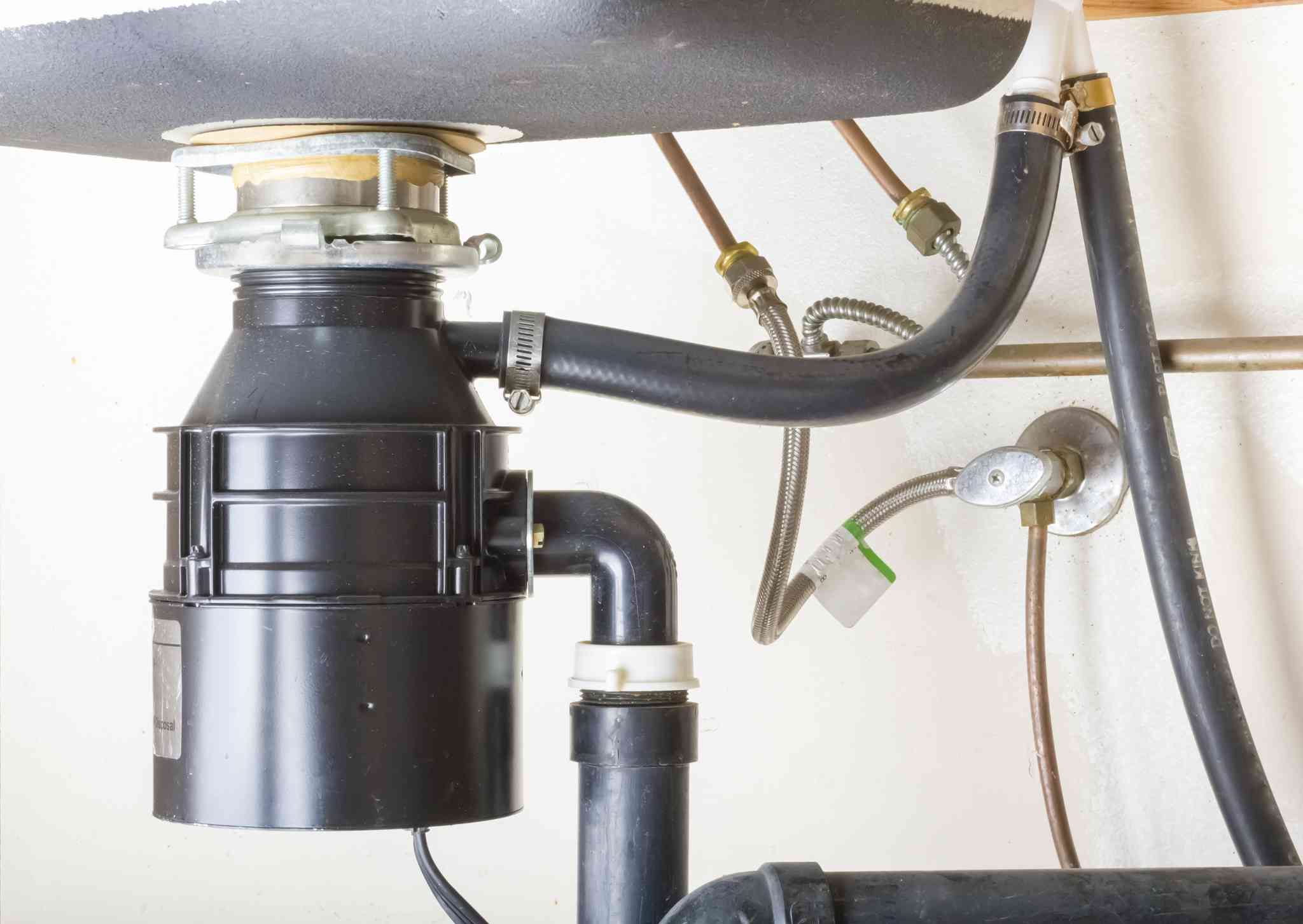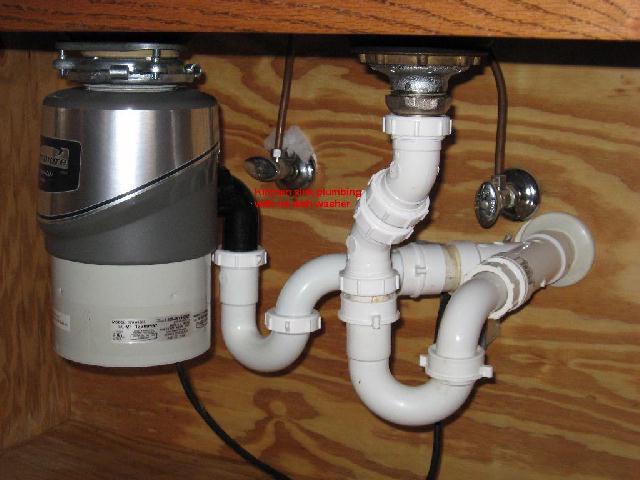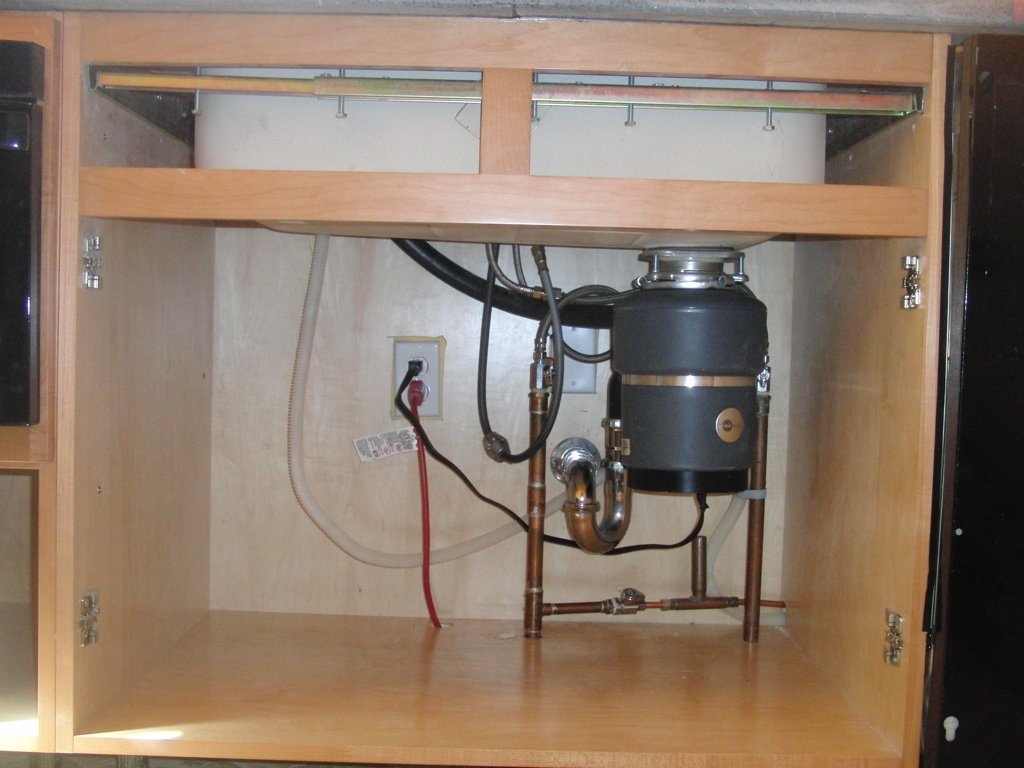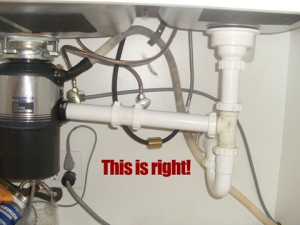Understanding the intricacies of kitchen sink plumbing when incorporating garbage disposal and dishwasher is essential for a functional and efficient kitchen. These components, while enhancing convenience, add complexity to the plumbing system. The key to a successful setup lies in careful planning, proper installation, and regular maintenance.
The first consideration is the drain system. The garbage disposal and dishwasher connect to the sink’s drain, typically through a shared pipe known as a drain line. This line channels the wastewater from both appliances to the main sewer or septic system. Installing a tee in the drain line allows for a seamless connection between the sink, garbage disposal, and dishwasher, creating a unified drainage system.
When installing a garbage disposal, connecting it securely to the sink drain is crucial. This involves attaching the disposal unit’s discharge pipe to the tee in the drain line. The disposal unit shreds food particles, preventing them from clogging the pipes. Regular cleaning and maintenance of the garbage disposal are essential to ensure its efficient operation and prevent unpleasant odors.

A dishwasher, on the other hand, connects to the kitchen sink plumbing through its branch tailpiece. This tailpiece is usually located on the side of the sink drain and allows the dishwasher to discharge wastewater directly into the drain system. Proper installation involves securing the dishwasher’s drain hose to the tailpiece, ensuring a watertight connection.
An important component in this setup is the air gap. This device prevents the backflow of wastewater from the sink into the dishwasher. It is typically installed on the sink countertop or mounted on the sink itself. The air gap ensures a one-way flow of water, preventing contamination of clean dishes with dirty sink water.
Ventilation is a critical aspect of kitchen sink plumbing. A properly vented system allows air to enter the pipes, facilitating the smooth flow of wastewater. The venting prevents suction or airlocks, ensuring that water drains efficiently from the sink, garbage disposal, and dishwasher. Vent pipes are usually installed behind the walls and connect to the drain system, providing an escape route for sewer gases.

Incorporating a garbage disposal and dishwasher into the plumbing system also involves electrical connections. The garbage disposal unit requires an electrical power source to operate, and a dedicated circuit is typically recommended. Dishwashers also require an electrical connection, usually through an adjacent outlet. Ensuring that these appliances have access to the necessary power supply is essential for their proper functioning.
Regular maintenance is key to preventing clogs and ensuring the longevity of the plumbing system. For the garbage disposal, avoid disposing of non-food items, fibrous materials, or grease, as these can lead to blockages. Running cold water while using the disposal helps solidify grease, making it easier to break down. Periodic cleaning with ice cubes and citrus peels can also help maintain a fresh-smelling disposal.
Dishwashers benefit from routine cleaning to prevent buildup of debris in the drain and filter. Checking the dishwasher’s drain hose for kinks or clogs is important, as any obstruction can lead to drainage issues. Additionally, using the right type and amount of dishwasher detergent helps maintain optimal performance and prevents residue buildup.

When dealing with kitchen sink plumbing, it’s essential to be aware of local building codes and regulations. These codes dictate specific requirements for the installation of plumbing fixtures and ensure that the system meets safety and sanitation standards. Complying with these regulations not only ensures a functional plumbing system but also prevents potential legal issues down the line.
In the event of plumbing issues, it’s advisable to address them promptly. Common problems include clogs in the drain line, leaks around connections, or malfunctioning garbage disposals and dishwashers. Understanding the basics of troubleshooting, such as checking for visible leaks, testing the disposal unit, and inspecting the dishwasher’s drainage, can help identify and resolve issues early on.
Professional installation is recommended when dealing with complex plumbing systems involving garbage disposals and dishwashers. Certified plumbers have the expertise to ensure that the connections are secure, the appliances are properly installed, and the entire system complies with local codes. This not only guarantees functionality but also minimizes the risk of potential problems in the future.
Incorporating garbage disposal and dishwasher into kitchen sink plumbing adds convenience but requires careful consideration of drainage, ventilation, and electrical connections. Proper installation, regular maintenance, adherence to local codes, and prompt troubleshooting are key elements in ensuring a functional and efficient plumbing system. Whether you’re remodeling your kitchen or upgrading appliances, understanding the complexities of this interconnected system is essential for a smoothly running culinary space.

Weekend Wrap Up – Family, Dishwashers & Friends – Oh My! « Josh & Tory

Plumbing A Double Sink With Disposal And Dishwasher TcWorks.Org

Need Disposer Installation Advise Terry Love Plumbing & Remodel DIY & Professional Forum
Related Posts:
- Kitchen Sink Sprayer Installation
- Kitchen Sink Overflow Drain Kit
- How To Clean Kitchen Sink Disposal
- Kitchen Sink Plugs Sale
- Kitchen Sink Overflow Leaking
- Kitchen Sink Supply Line Size
- Automatic Soap Dispenser For Kitchen Sink
- Everything But A Kitchen Sink
- Kitchen Sink Strainer Waste Plug Homebase
- Designer Kitchen Sinks Stainless Steel